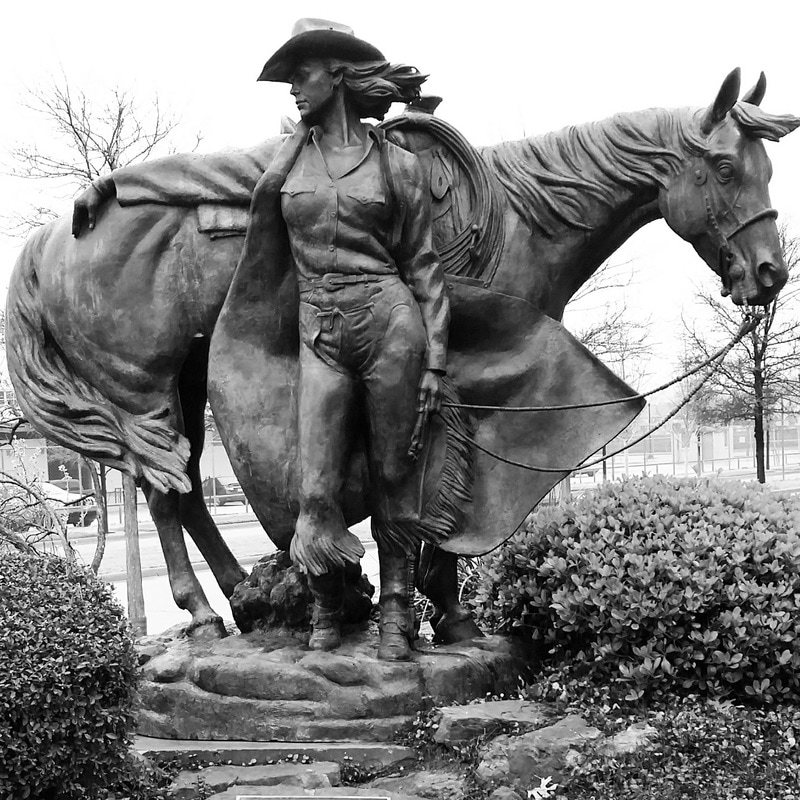I've heard many an insightful horseman talk about how riding is much like learning a language -- first, you learn the alphabet, some basic words and short phrases; soon, you're forming short sentences and maybe you're able to carry on some brief - albeit awkward - conversations; as you practice more and more, you find conversations flowing better, and your fluency improving. eventually, you gain enough proficiency that conversation flows smoothly, and you are a comfortable and relaxed communicator.
This really mirrors our flow of communication with a new or green horse. We start with basic commands - walk, trot, canter, halt, yield right and left; soon, we'll add more complicated movements with foundation in those basics, asking for lightness and responsiveness along the way. If your end of the conversation is deliberate and consistent, and you're working at truly 'dancing' with your horse... well, that's where the magic happens.
How can you be a great conversationalist with your horse?
You may have also heard that a great ride is like having a conversation with a close friend over a cup of coffee - it's relaxed, flowing, easy. You and your friend both listen carefully to each other, responding with questions and insights, and more listening... a great ride with your horse should have a similar give-and-take.
Since we're the ones guiding the conversation with our horses, it's important we're setting the stage for balanced communication. What might that look like?
For any given request/movement you ask of your horse, I like to use this format - think of it as an 'order of operations'. Remember math class? For the most part, you should follow this order for any given movement or change in movement, as you flow from one thing to the next in your ride:
Work this slowly at first, acknowledging each step as you go. This will feel tedious at first, but I encourage you to stay with it, you'll notice some great changes - you might see your aids lighten up, and other notable changes in your ask; you'll be more aware of changes in your horse, and you'll be better prepared to make great follow-up responses.
I would love to hear how this idea helps you! Please leave a comment :)
Cheers to good horses,
Erin
This really mirrors our flow of communication with a new or green horse. We start with basic commands - walk, trot, canter, halt, yield right and left; soon, we'll add more complicated movements with foundation in those basics, asking for lightness and responsiveness along the way. If your end of the conversation is deliberate and consistent, and you're working at truly 'dancing' with your horse... well, that's where the magic happens.
How can you be a great conversationalist with your horse?
You may have also heard that a great ride is like having a conversation with a close friend over a cup of coffee - it's relaxed, flowing, easy. You and your friend both listen carefully to each other, responding with questions and insights, and more listening... a great ride with your horse should have a similar give-and-take.
Since we're the ones guiding the conversation with our horses, it's important we're setting the stage for balanced communication. What might that look like?
For any given request/movement you ask of your horse, I like to use this format - think of it as an 'order of operations'. Remember math class? For the most part, you should follow this order for any given movement or change in movement, as you flow from one thing to the next in your ride:
- Prepare
- Ask
- Listen
- Respond
- Repeat #'s 3 and 4
Work this slowly at first, acknowledging each step as you go. This will feel tedious at first, but I encourage you to stay with it, you'll notice some great changes - you might see your aids lighten up, and other notable changes in your ask; you'll be more aware of changes in your horse, and you'll be better prepared to make great follow-up responses.
I would love to hear how this idea helps you! Please leave a comment :)
Cheers to good horses,
Erin

 RSS Feed
RSS Feed
